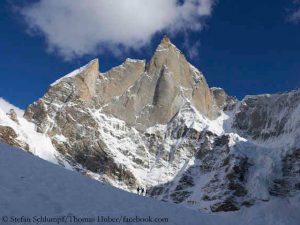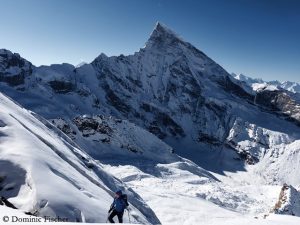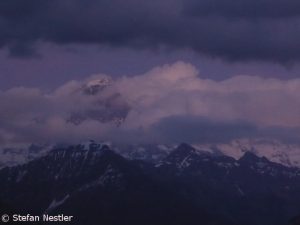Exciting attempt on Cerro Kishtwar
They have been on the road for the last three weeks and are expected to have meanwhile arrived at the destination of their expedition. The Swiss climbers Stephan Siegrist and Julian Zanker and the German Thomas Huber want to tackle the still not mastered West Face of the 6155-meter-high Cerro Kishtwar. The mountain, located in the Indian part of the crisis region Kashmir, has been scaled only three times so far. In 1993, the British Mick Fowler and the American Steve Susted succeeded the first ascent via the Northwest Face. In 2011, Siegrist, his Swiss countryman Denis Burdet and the Austrian David Lama reached the summit of Cerro Kishtwar as the second rope team, after opening a new route on the edge of the West Face. The third ascent was made in 2015 by the Slovenes Marko Prezelj and Urban Novak, the American Hayden Kennedy and the Frenchman Manu Pellisier. They were awarded the Piolet d’Or, the “Oscar of the Climbers”, for their first ascend of the South Face.
Always in his mind
He just could not get the West Face, “the largest still unclimbed rock face in the Kashmir Himalaya”, out of his head since 2011, Stephan Siegrist wrote to me before leaving to India. “At that time we climbed an ice route on the right side of the main wall. Again and again I looked at this amazing wall. The idea of tackling this line did not let me off.” According to Stephan, the trio is also planning to free climb some rope lengths of the route. The 44-year-old has infected Thomas Huber with his enthusiasm. The older of the Huber brothers was raving to me about “one of the most beautiful, coolest unclimbed walls of the world”, with best quality of granite: “When I saw pictures of the Cerro Kishtwar West Face, I said: Actually, this is the second Cerro Torre,” the 50-year-old told me.
Instinct required
The third in the trio is the Swiss climber and mountain guide Julian Zanker, who was already en route with Siegrist in the Indian part of Kashmir in fall 2016. Both were then temporarily detained by the Indian police because they were wrongly accused of having used a satellite telephone. The use of private satellite equipment is prohibited in India because of the fear of terrorist attacks. “Concerning weather you have to rely on your instinct again. This will be very exciting,” said Huber. “We have drawn up a strategy, and I believe it will work.” He really likes to be on the road with Stephan Siegrist, says Thomas: “Stef is an incredibly great rope partner. You always have fun with him in the base camp and on the mountain. There is always something to laugh about. But he knows exactly when it gets serious. And then he pushes it through.“
“Live as intensively as possible!”
Siegrist and Huber have something less pleasing in common. Both suffered fractures of the scull after falls. Stephan had to abandon an attempt on the eight-thousander Makalu in 2013 due to the long-term consequences of the injury he had sustainde several years ago. Since then, he has chosen his goals mainly on difficult six-thousanders. Thomas had suffered a skull fracture at the beginning of July 2016 when he had fallen 16 meters deep from a rock wall in the Berchtesgaden region. He had received an emergency surgery. Only a month later, he had set off for an expedition to a seven-thousander in Pakistan. “I just accepted this incredible fortune. I do not question that. And this is the reason that I’m well,“ Thomas told me recently. “I’m no longer afraid of my death. The more important thing is: Live now, as well, as intensively and as beautifully as possible!”









